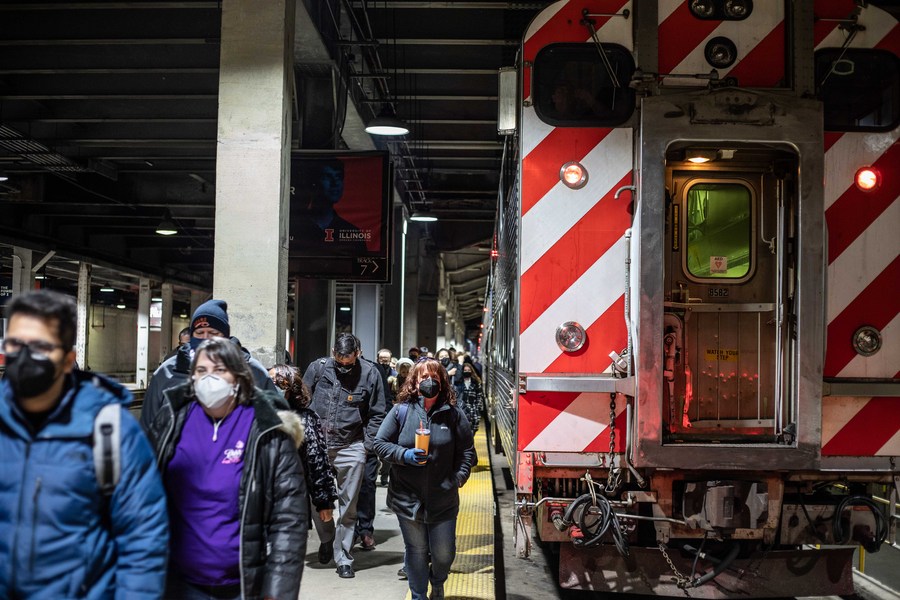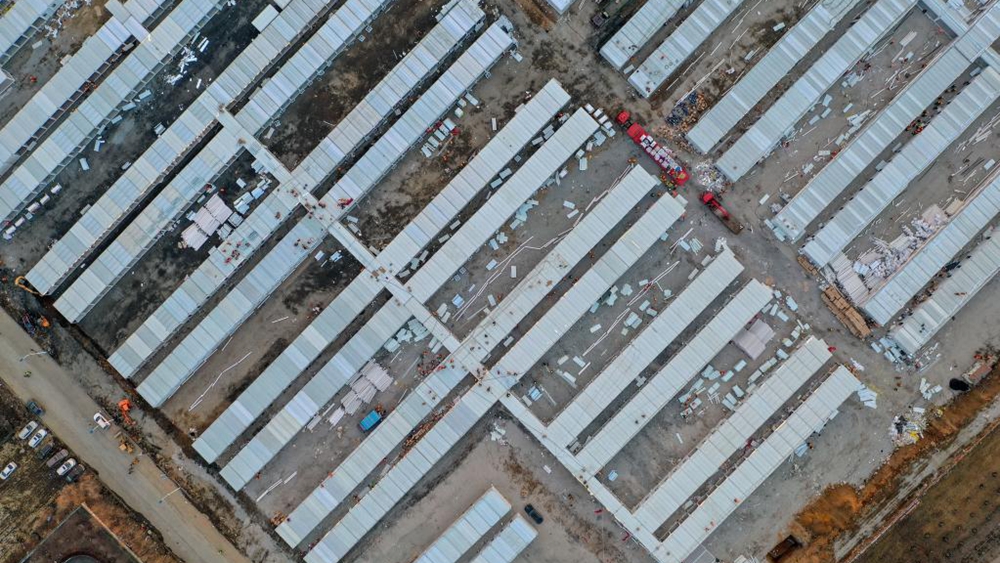
People wearing face masks get off a train at Union Station in Chicago, the United States, on Feb. 28, 2022. (Photo by Vincent D. Johnson/Xinhua)
The seven-day average of vaccine doses of all types given in the United States fell to 127,000 per day this week, according to data tracked by The Hill. That marks a steady decline since January, when more than 1 million shots per day were being administered.
LOS ANGELES, March 28 (Xinhua) -- The number of COVID-19 vaccinations per day in the United States has fallen to the lowest level since the early days of the inoculation campaign in 2020, while new Omicron subvariant led to rise in infections in country.
The seven-day average of vaccine doses of all types given in the country fell to 127,000 per day this week, according to data tracked by The Hill. That marks a steady decline since January, when more than 1 million shots per day were being administered.
The seven-day average number of administered vaccine doses over the past week was a 27.1 decrease from the previous week, according to data of the U.S. Centers for Disease Control and Prevention (CDC).
As of March 23, about 255 million people, or 76.8 percent of the total U.S. population, have received at least one dose of vaccine. About 217.2 million people, or 65.4 percent of the total U.S. population, have been fully vaccinated, CDC data show.
However, less than half of the total booster-eligible population has not yet received a booster dose.
About 96.9 million booster doses have been reported in people who have been fully vaccinated, according to CDC data.
Experts said booster shots are particularly important in the face of the Omicron variant, which has a greater ability to evade the protection from two doses of the vaccine.
The lagging rates in COVID-19 vaccinations and boosters left the United States more vulnerable to a potential new increase in cases, as is starting to happen in Europe, even with higher booster rates in many countries.

A woman jogs by the Lincoln Memorial Reflecting Pool in Washington, D.C., the United States, on March 4, 2022. (Photo by Ting Shen/Xinhua)
"Periodic reminder that U.S. booster coverage is terrible, especially considering most in this group are not opposed to vaccines in general and many are high risk (age or otherwise)," tweeted Jason Schwartz, a professor at the Yale School of Public Health.
Amid the slowdown in vaccinations, the BA.2 sub-lineage of the Omicron variant is steadily gaining its ground in the country, with infections almost doubling each week in February, CDC data show.
The BA.2 variant now makes up over one third of new COVID-19 infections in the United States. This data is up from 22.3 percent a week prior, and 15.8 percent two weeks before.
In the northeastern part of the country, BA.2's prevalence has surpassed 50 percent in the latest week.
The rapid spread of the variant coincided with the start of the allergy season, which may complicate symptoms and delay timely distinction.
With COVID-19 cases rising in parts of Europe and Asia due to BA.2's rapid spread, scientists worry that the variant may soon push cases up in the United States too.
Anthony Fauci, the nation's top infectious disease expert, said he expects "an uptick in cases" due to BA.2, but not necessarily a massive surge like other variants have caused. ■












